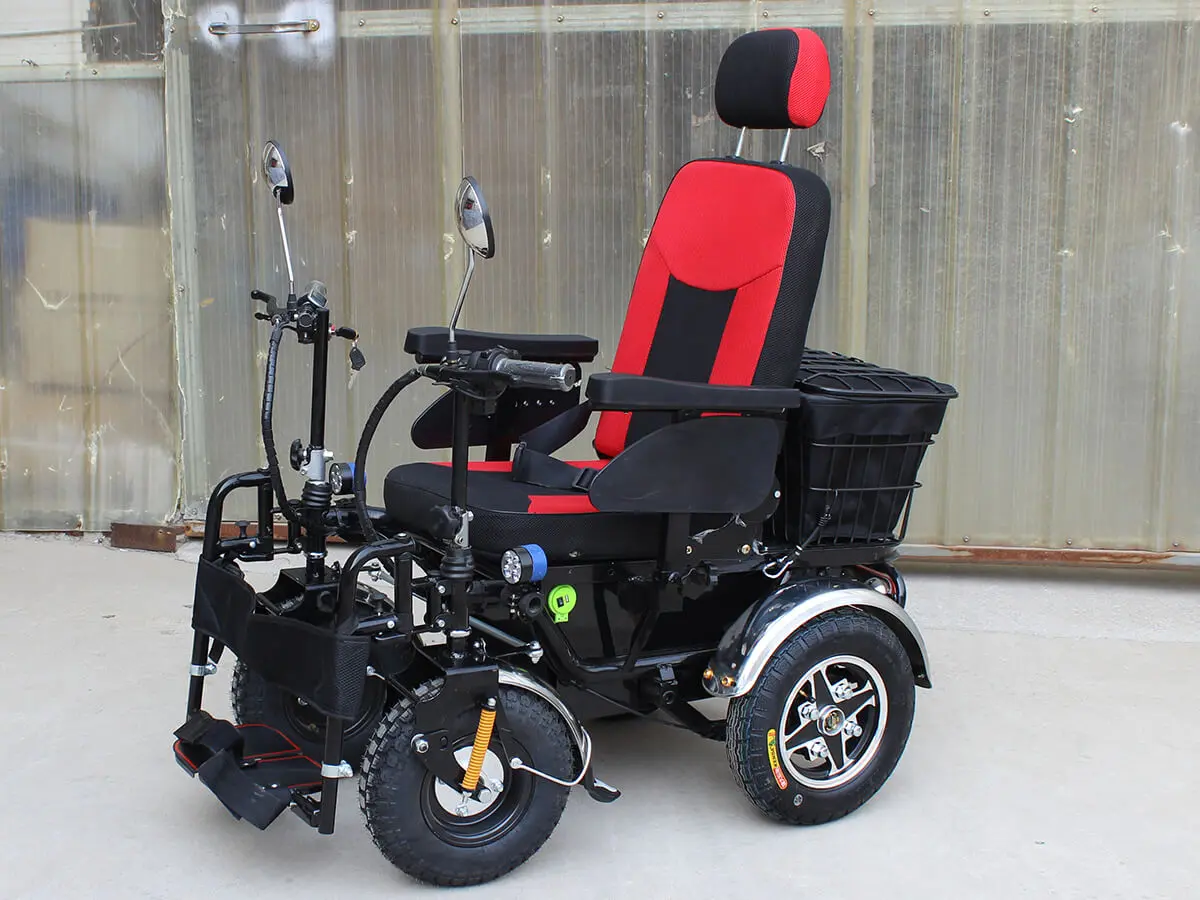Advancements in assistive technology have transformed mobility solutions for individuals with disabilities. Among these innovations, smart wheelchairs have emerged as a groundbreaking development, integrating artificial intelligence (AI), sensors, and automated controls to enhance user experience and independence. These wheelchairs provide greater accessibility, improved safety, and a higher level of convenience compared to traditional models.
A Smart Wheelchair is designed to assist individuals with mobility impairments by incorporating cutting-edge features such as voice control, obstacle detection, and autonomous navigation. These intelligent systems help users move efficiently in various environments while ensuring safety and ease of operation.
Features of Smart Wheelchairs
Smart wheelchairs come with a range of features that distinguish them from conventional manual and electric models. These advanced capabilities improve user control, reduce strain, and offer better maneuverability in different settings.
1. Autonomous Navigation
Smart wheelchairs utilize AI-powered navigation systems, enabling them to detect obstacles and plan safe paths. These systems use sensors, cameras, and GPS to assess the surroundings and make real-time decisions for smooth movement.
2. Voice and Gesture Control
Many smart wheelchairs come with voice command functionality, allowing users to operate the device hands-free. Some models also include gesture recognition technology, enabling movement control through simple hand or head gestures.
3. Obstacle Detection and Collision Avoidance
Equipped with LiDAR sensors, ultrasonic sensors, and cameras, smart wheelchairs can identify obstacles in their path and adjust movement accordingly. This feature prevents collisions and ensures user safety, especially in crowded or unfamiliar environments.
4. Remote Control and Mobile App Integration
Users can control their wheelchair remotely using a smartphone app or a handheld device. This feature is beneficial for caregivers who need to assist users from a distance. The app may also provide real-time tracking, battery monitoring, and usage analytics.
5. Customizable Seating and Posture Support
Smart wheelchairs offer adjustable seating positions, pressure relief cushions, and automated reclining features to enhance comfort and reduce the risk of pressure sores. Some models even include standing functions to support improved posture and circulation.
6. Environmental Adaptation
These wheelchairs can adapt to different terrains, such as sidewalks, uneven ground, and indoor flooring. With advanced suspension systems, they provide a smoother ride and reduce vibrations that may cause discomfort.
7. AI-Powered Learning Capabilities
Some smart wheelchairs use machine learning to recognize user preferences and adjust settings accordingly. Over time, these systems improve navigation efficiency and personalize the experience based on user behavior.
Benefits of Smart Wheelchairs
The integration of intelligent technologies in wheelchairs has provided numerous advantages for users, making everyday mobility more seamless and efficient.
1. Enhanced Independence and Mobility
Smart wheelchairs reduce the need for constant caregiver assistance, allowing users to move freely and navigate their surroundings with minimal effort. Voice and remote control features provide further independence for individuals with limited hand movement.
2. Improved Safety and Security
With real-time obstacle detection, emergency stop functions, and GPS tracking, smart wheelchairs ensure a safer mobility experience. These features prevent accidents and offer peace of mind for both users and caregivers.
3. Greater Comfort and Ergonomic Support
Adjustable seating, reclining options, and automated posture control improve user comfort and reduce physical strain. These features help prevent long-term musculoskeletal issues associated with prolonged wheelchair use.
4. Accessibility in Various Environments
Smart wheelchairs are designed to function indoors and outdoors, adapting to different terrains and inclines. This flexibility allows users to engage in a wide range of activities without mobility limitations.
5. User-Friendly Operation
With intuitive controls, voice commands, and mobile app integration, operating a smart wheelchair becomes simple and efficient. These features make the technology accessible to individuals of all ages and abilities.
6. Health Monitoring and Alerts
Some smart wheelchairs come equipped with health monitoring systems that track vital signs, posture, and activity levels. If an irregularity is detected, the system can alert caregivers or healthcare providers for timely intervention.
Considerations When Choosing a Smart Wheelchair
Selecting the right smart wheelchair requires evaluating several key factors to ensure it meets the user’s specific needs.
1. Functionality and Features
Different models offer various levels of automation, AI capabilities, and customization. It is important to assess which features align with the user’s lifestyle and mobility requirements.
2. Battery Life and Charging Efficiency
Since smart wheelchairs rely on battery power, selecting a model with long battery life and fast charging capabilities is crucial for uninterrupted mobility.
3. Weight and Portability
Some smart wheelchairs are lightweight and foldable, making them easier to transport. Others are more robust and suited for long-term stationary use. Considering portability is essential for users who frequently travel.
4. Durability and Terrain Adaptability
For users who require outdoor mobility, choosing a model with durable wheels and shock absorption is necessary. A wheelchair with good traction and suspension ensures a smooth ride on different surfaces.
5. Cost and Insurance Coverage
Smart wheelchairs come at a higher price due to their advanced features. Checking for insurance coverage, financial assistance, or payment plans can help manage the cost effectively.
The Future of Smart Wheelchairs
The continuous evolution of technology promises even more advanced smart wheelchair designs in the future. Some emerging trends include:
- Brain-Computer Interface (BCI): Researchers are developing wheelchairs that respond to brain signals, allowing users to control movement through thought.
- AI-Powered Personalization: Future models may offer fully automated customization, learning from user behavior to optimize navigation and comfort.
- Integration with Smart Home Systems: Connecting wheelchairs with smart home devices will enable users to control appliances, lighting, and security systems seamlessly.
Conclusion
Smart wheelchairs represent a significant advancement in assistive mobility technology, offering enhanced independence, safety, and comfort for users. With features like AI-driven navigation, voice commands, and obstacle detection, they provide a seamless mobility experience tailored to individual needs. As innovation continues, these intelligent wheelchairs will further improve accessibility and quality of life for individuals with mobility impairments.
